2. Approach
3. Design
4. Procedure
5. Reference
Subject English Grade Fourth
Teaching Method Audio Lingual Method Unit 1. I WANT TO BE A TEACHER
Objectives Students understand the situation and speak about their future occupations by using “I want to be a teacher.”
Stage Procedure Teaching and Learning Activities Time Aids
Teacher Students
I
N
T
R
O
D Greeting
Roll Call Start the class by greeting the students.
Hello, everyone!
How are you, today?
Great!
Hello, teacher!
I’m fine. 1’
D
E
V
E
L
O
P
M
E
N
T Dialogue
Repetition Ask the students to listen carefully to the dialogue
Read out the dialogue
Let’s listen to the dialogue!
Read the dialogue line by line and ask the students to follow after.
Listen and repeat after me
After finishing it, teacher says
Great!
Listen to the dialogue
Repeat the dialogue line by line after the teacher 2’
Backward Build-up
Drill (Using this drill when students have repeat some sentence)
Start with the end of the sentence and has the class repeat just the last two words, and adds a few more words.
(Example)
Ok, repeat after me
At the hospital
Sick people at the hospital
Helps sick people at the hospital
She helps sick people at the hospital
Good job!
Students can take note of where each word or phrase begins and ends in the sentence.
At the hospital
Sick people at the hospital
Helps sick people at the hospital
She helps sick people at the hospital 1’
Single-slot
Substitution
Drill Give an example of how they are supposed to make a new sentence out of the expression “I want to be a teacher” with the new words.
(Example)
I want to be a teacher.
(cue: singer)
Singer
I want to be a singer.
Show the students the picture one by one, and encourage them to make a proper sentence using the word that best describes the picture.
(Example)
(cue: Police officer)
Police officer
↓
(cue: fire fighter)
Fire fighter
↓
(cue: chef)
Chef
↓
(cue: banker)
Banker
When the students have got the right answer, compliment their performance.
Great!
Very good!
Good Job!
Pay attention to the teacher’s instruction.
Look at the picture and speak out the right sentence.
I want to be a police officer
I want to be a fire fighter
I want to be a chef
I want to be a banker 3’ PPT
D
E
V
E
L
O
P
M
E
N
T
Multi-slot
Substitution
Drill Tell the students that they will be given some cues including the expressions just learned right now, and that they will have to create a new sentence every time they are provided with a new cue.
(Example)
I want to be a singer, because I like singing a song.
(cue: teacher, teaching students)
Teacher, teaching students
↓
(cue: police officer, helping endangered people)
Police officer, helping endangered people
↓
(cue: chef, cooking)
Chef, cooking
Listen carefully to the instruction.
Construct new sentences using the given cues.
I want to be a teacher, because I like teaching students.
I want to be a police officer, because I like helping endangered people.
I want to be a chef, because I like cooking 3’ PPT
Transformation Drill Asks students to change one type of sentence into another
I say “I want to be a singer”, you make a question by saying “Do you want to be a singer?”
Does everyone understand?
Ok, let’s begin!
(Example)
I want to be a fire fighter.
↓
I want to be a banker.
Students transform given sentences.
Do you want to be a fire fighter?
Do you want to be a banker? 3’
1) The method is based on false assumptions about language.
The theoretical foundations of ALM were attacked as being unsound in terms of both language theory and learning theory. The behaviorist theory could not possibly serve as a model of how humans learn language, since much of human language is not imitated behavior, but is created a new from underlying knowledge of abstract rules.
2) Practical results fell short of expectations.
Students were often found to be unable to transfer skills acquired through Audiolingualism to real communication outside the classroom. Because techniques such as pattern practice, drilling, memorization, etc. might lead to language like behavior, but they are not resulting in competence. And teachers complain about the lack of effectiveness of the techniques in the long run, and students complain about the boredom caused by endless pattern drills.
Decline of Audio-Lingual Method
1) Noam Chomsky: “Review of B.F. Skinner’s Verbal Behavior”
In the late 1950s, the theoretical underpinnings of the method were questioned by linguists such as Noam Chomsky, who pointed out the limitations of structural linguistics. The relevance of behaviorist psychology to language learning was also questioned, most famously by Chomsky's review of B.F. Skinner's Verbal Behavior in 1959. The audio-lingual method was thus deprived of its scientific credibility and it was only a matter of time before the effectiveness of the method itself was questioned.
2) Wilga Rivers: “The Psychologist and the Foreign Language Teacher.“
In 1964, Wilga Rivers released a critique of the method in her book, “The Psychologist and the Foreign Language Teacher.“ Subsequent research by others, inspired by her book, produced results which showed explicit grammatical instruction in the mother language to be more productive. These developments, coupled with the emergence of humanist pedagogy led to a rapid decline in the popularity of audiolingualism.
3) Philip Smith: the Pennsylvania Project
Philip Smith's study from 1965-1969, termed the Pennsylvania Project, provided significant proof that audio-lingual methods were less effective than a more traditional cognitive approach involving the learner's first language.
Noam Chomsky: Review of B.F. Skinner’s Verbal Behavior
The MIT linguist Noam Chomsky rejected the structuralist approach to language description as well as the behaviorist theory of language learning. In his book, ‘Review of B.F. Skinner’s Verbal Behavior’, he mentioned that language use – and other higher mental functions – is significantly more complex than the instinctual behavior that was studied in the original behaviorist experiments. In particular, the simple functions used to describe behavior in the laboratory experiments are unlikely to scale to the study of language, or to any number of higher mental processes, for that matter. Also he added that we should be careful about the generalization of terminology that is well-defined in simple, controlled experiments, but becomes vacuous or tautological when applied to more complex scenarios. The results of experiments concerning low-level, instinctive behavior may not easily generalize to explain more complex behavior. He insisted that, “Language is not a habit structure. Ordinary linguistic behavior characteristically involves innovation, formation of new sentences and patterns in accordance with rules of great abstractness and intricacy.”
Chomsky’s theory of transformational grammar proposed that the fundamental properties of language derive from innate aspects of the mind and from how humans process experience through language. Chomsky also proposed an alternative theory of language learning to that of the behaviorists. Behaviorism regarded language learning as similar in principle to any other kind of learning. It was subject to the same laws of stimulus and response, reinforcement and association. Chomsky argued that such a learning theory could not possibly serve as a model of how humans learn language, since much of human language use is not imitated behavior but is created anew from underlying knowledge of abstract rules. Sentences are not learned by imitation and repetition but “generated” from the leaner’s underlying “competence.”




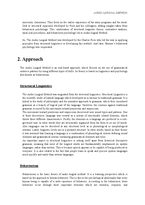
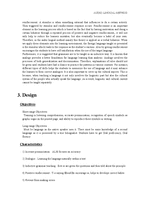
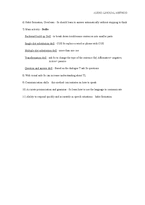
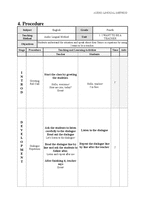

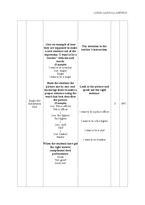
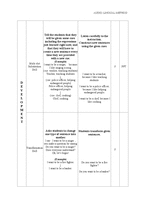
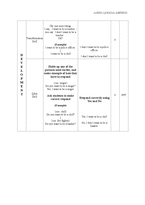
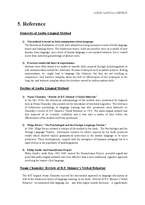
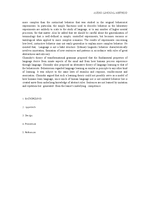
 분야
분야


